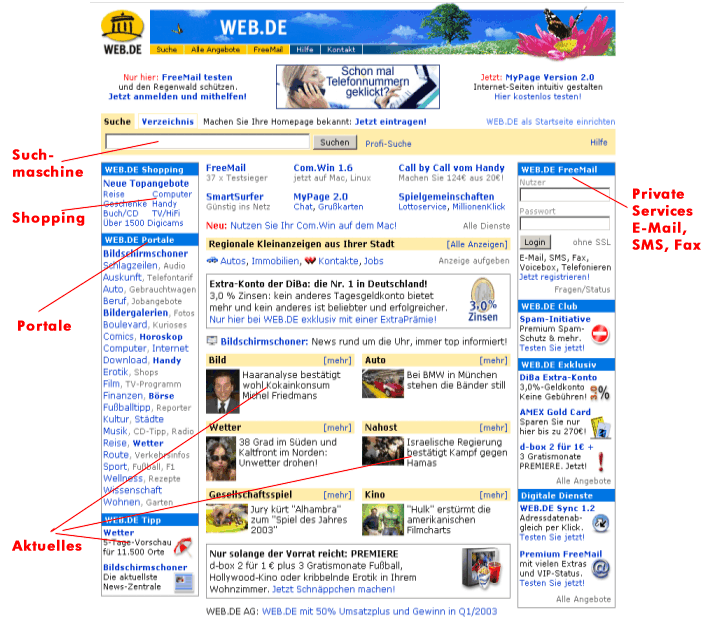portal
A portal is usually associated with an Internet portal or web portal. However, this term also exists for WLANs for the interface to the wired local area network( LAN). An Internet portal is the entry and navigation page for the World Wide Web(WWW), on which all relevant functions and information are provided for use.
The general range of functions offered by portals generally includes search functions via a search engine, an up-to-date information offering, communication services such as e-mail or short message service( SMS), address directories, electronic marketplaces( EM) and private services such as calendars, home pages and e-mail suggestions. As personalized entry websites, portals point to all the necessary content to enable the relevant target group to participate in information transfer and e-business.
An Internet portal can be vertical or horizontal in terms of the content it offers; there are open and closed portals, public portals such as citizens' portals and corporate portals, those that operate regionally and others that are nationally oriented, and business portals for B2B and B2C. Portals can be expert-, topic-, industry- or company-oriented, they can be knowledge-oriented such as knowledge portals, information portals or library portals in which information from different data sources is presented on a uniform interface, they can function as virtual worlds in which avatars call the shots, or they can be oriented toward mobile applications such as the mobile app stores.
Horizontal portals are those that offer a broad overview and are primarily used by the masses. These include: gmx.de, lycos.de, aol.de or yahoo.de.
Vertical portals, also known as vortals, are expert portals that deal with a specific topic or professional group. Here, the focus is on topic-specific information and the exchange of experience between users.
A flexible portal structure requires several functionalities. These include the use of open standards such as Extensible Markup Language(XML) to simplify data exchange and data integration, high dataavailability that can be achieved via modern storageareanetworks( SAN) and server clusters, scalability to cope with all traffic fluctuations, and security-related aspects such as access controls for applications and data.

